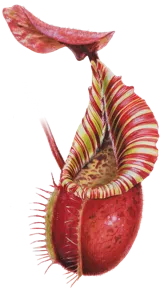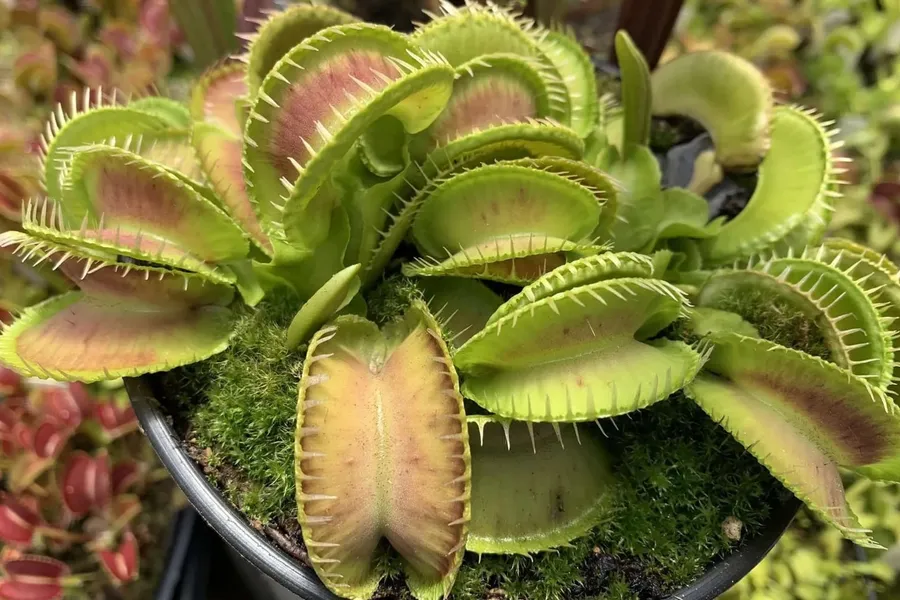There is only one species of Venus flytrap - Dionaea muscipula - but many different forms, known as cultivars. The typical form of the Venus flytrap reaches 10-12cm once mature. Bear in mind that’s the size of the whole plant - the individual traps measure about 2-3cm.
But that’s just the tip of the iceberg!
The world’s biggest flytrap was grown by carnivorous plant legend Jeremiah Harris in Colorado, and measured an enormous 6.1 centimeters (2.4 inches). This was the Alien cultivar, known for its elongated traps and short teeth reminiscent of the alien in Ridley Scott’s famous film.
Click on any photo to zoom in. Use arrow keys or swipe to navigate.
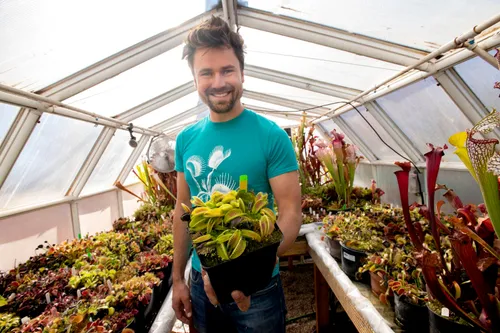 Jeremiah Harris, holding his record-breaking Dionaea 'Alien'!
Jeremiah Harris, holding his record-breaking Dionaea 'Alien'! 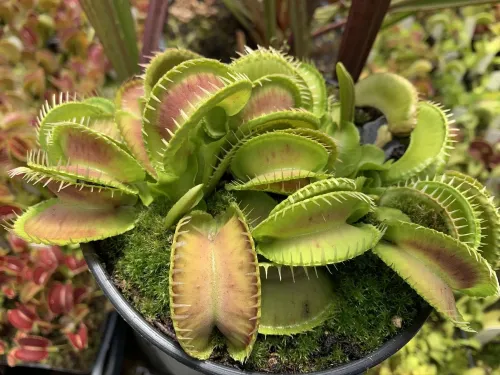 The 'Alien' cultivar of the Venus Flytrap, grown and photographed by Jeremiah
The 'Alien' cultivar of the Venus Flytrap, grown and photographed by Jeremiah The Venus flytrap originates from the coastal bogs of North and South Carolina, and this is the only place on Earth where Venus flytraps are found in nature (no, you won’t find any on Venus). The cultivars are generally man-made, created either by breeding Venus flytraps with desirable characteristics, or by freak genetic mutations as they’re cloned in a laboratory. Cultivars are selected for size, color, and other unusual characteristics.
What are the biggest Venus Flytrap cultivars?
There are hundreds of registered cultivars, and many are selected for size. Below are a few of my favorite giant forms:
- B52: This is one of the most famous Venus flytrap cultivars. It’s a vigorous grower and was bred by Henning von Schmeling in Georgia. This clone was one of 7 seedlings he got from his plant ‘Carolina Giant’, and he named it after the American bomber!
- Slack’s Giant: Originally grown by legendary UK grower Adrian Slack, this cultivar has excellent red coloration and an upright growth habit. This clone is also known as ‘G16’. A strong grower.
- South West Giant: This plant originates from the Little Shop of Horrors nursery in the UK, and can be distinguished from many other cultivars by its extra-long petioles (leaves) that hold traps high in the air. I’ve grown this outdoors year-round.
- DCXL: A new American cultivar that rivals all others in terms of size! It’s an attractive cultivar and also very hardy - photos below show a stunning specimen grown by Megan (aka @carnivorous_plant_girl).
Many of these giant cultivars are available to buy from Hampshire Carnivorous Plants in the UK.
In the US, I can highly recommend California Carnivores. They offer a wide range of giant and mutant Venus Flytrap cultivars for delivery. You can also get 10% off your order with the code tomscarnivores.
Click on any photo to zoom in. Use arrow keys or swipe to navigate.
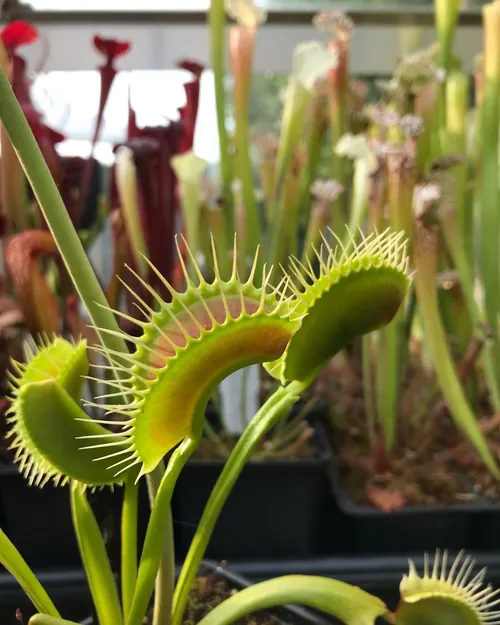 Dionaea muscipula 'DCXL' - huge traps on this Venus flytrap!
Dionaea muscipula 'DCXL' - huge traps on this Venus flytrap! 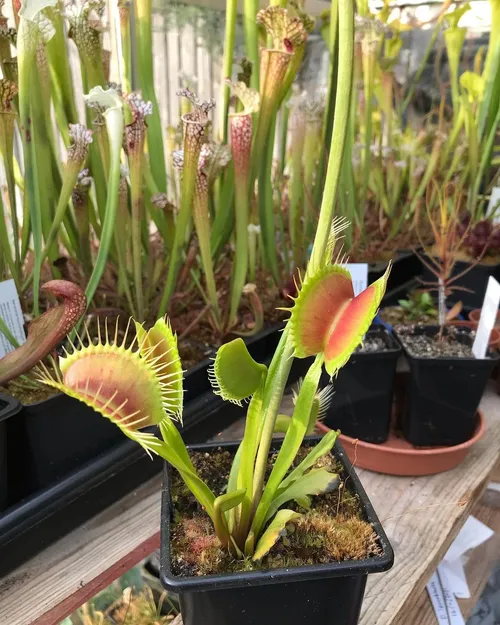 Dionaea muscipula 'DCXL', grown by Megan
Dionaea muscipula 'DCXL', grown by Megan What’s the biggest prey that Venus Flytraps can eat?
We’ve seen that Venus flytraps get pretty big. But does that mean they eat prey larger than flies?
Well, yes and no. While a flytrap might sometimes snap shut on a creature larger than the trap - like a worm or a snail - it won’t be able to successfully digest it. Digestion will only take place if the trap can seal around the trapped prey. For this reason, Venus flytraps tend to do best with bugs that are about a third the size of the trap: flies, spiders, and other crawling insects.
But while Venus flytraps don’t eat big prey, there are other carnivorous plants which do!
Can any carnivorous plants eat humans?
No! But there are carnivorous plants from Southeast Asia which can eat small mammals like mice, bones and all. These are called tropical pitcher plants, or Nepenthes. Their leaves develop into cups which hold digestive fluid - victims slip on the rim, fall into the fluid, and are digested.
There are over 170 species of Nepenthes, and they vary enormously in size and shape. These species are - for the most part - cross-fertile with one another, which means there are countless Nepenthes hybrids, both natural and man-made. One particularly mighty hybrid is Nepenthes truncata x ephippiata, which is one of the biggest carnivorous plants in the world. It has huge pitchers which regularly exceed 30cm in height, and is reported by many growers to routinely catch mice.
Click on any photo to zoom in. Use arrow keys or swipe to navigate.
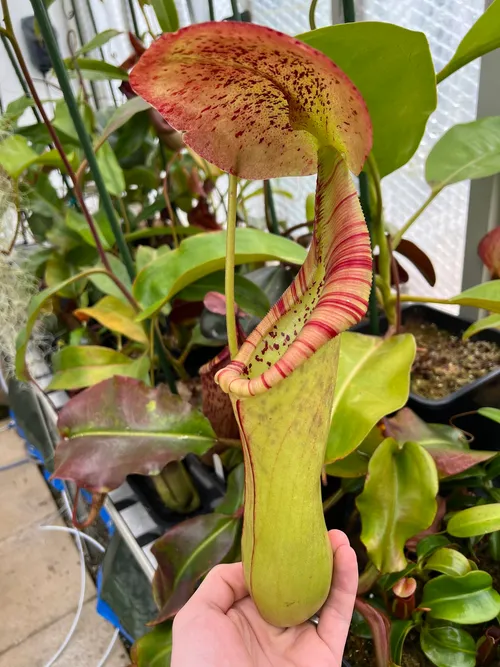 Enormous pitcher on Nepenthes truncata x ephippiata!
Enormous pitcher on Nepenthes truncata x ephippiata! 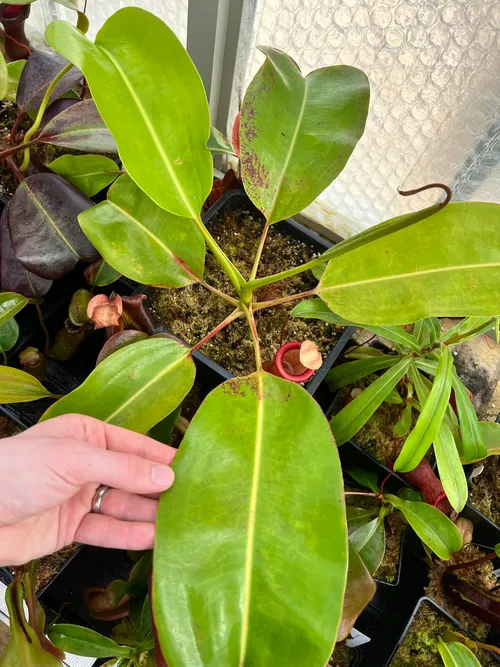 Nepenthes truncata x ephippiata, already 80cm+ across
Nepenthes truncata x ephippiata, already 80cm+ across Like the Venus flytrap cultivars we discovered earlier, this plant is a man-made hybrid. But plenty of giants occur in nature, too. Some of the biggest include Nepenthes rajah, Nepenthes edwardsiana, and Nepenthes attenboroughii, the latter being named after famed naturalist Sir David Attenborough.
Where can I learn more?
Right here! You can read a complete guide to growing Venus Flytraps, discover some of the common reasons your Venus Flytrap could be turning black, and discover what food you should be feeding your flytraps. I’d also recommend checking out the following pages and videos on the web if you’d like to learn more:
